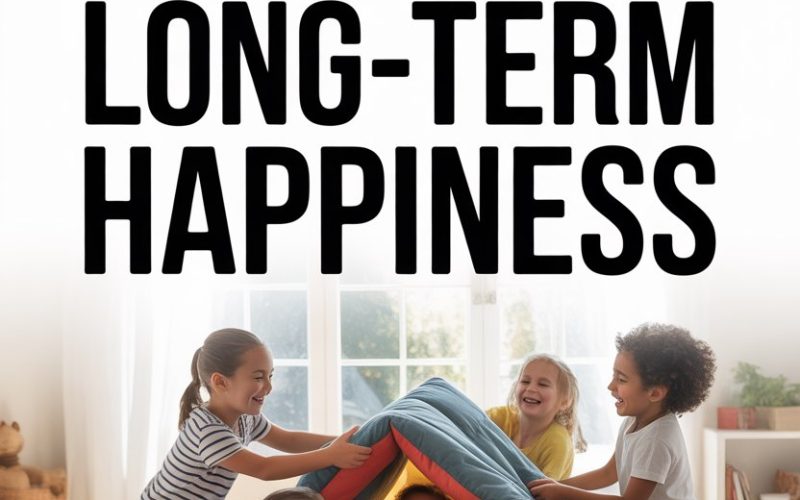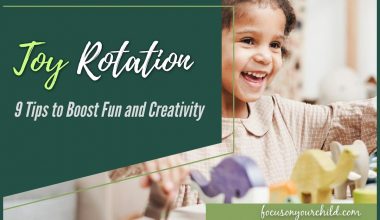Anyone who’s ever wrangled a toddler in a supermarket knows: parenting isn’t for the faint of heart (or for anyone wearing white trousers).
The wish for happy kids sits right up there with “just one night of uninterrupted sleep” in the parental dream journal. But what does it actually mean to raise children for long-term happiness?
Turns out, it’s less about bubble-wrapped childhoods and more about equipping them with genuine life skills, grit, and a dash of joy.
No magic wands here—just practical approaches that even knackered, busy parents can work into real life between dinner, work calls, and the ever-replenishing laundry mountain.
Building Emotional Literacy
Kids aren’t born knowing how to put words to their feelings. Sometimes, neither are adults (see: anyone who’s ever snapped at their partner after a stressful day).
Children who can recognize and label their emotions are better equipped to manage tough moments and bounce back from setbacks.
Try narrating your own feelings out loud, even when you’re frustrated about losing your keys for the fourth time this week. Ask your child simple questions like, “You look sad—do you want to talk or have a cuddle?”
Books and stories that highlight different emotions can also give them the vocabulary they need. Research from Yale’s Center for Emotional Intelligence suggests these skills are strongly linked to happiness and resilience.
Cultivating a Growth Mindset
It’s tempting to shower our offspring with praise worthy of Olympic athletes for every marginally straight scribble.
But kids who believe their abilities can develop through effort—rather than being set in stone—are more likely to take on challenges, persist after failure, and find satisfaction in the process.
Carol Dweck’s work on growth mindset highlights how small shifts in language can make a difference. Swap “You’re so smart!” for “You worked hard on that!” Celebrate effort, strategy, and progress.
When your child hits a roadblock, resist the urge to fix everything. Instead, ask, “What could you try next?” Easier said than done, especially when the tears are flowing, but worth every ounce of patience.
Encouraging Social Connection
No child is an island (even the ones who seem determined to construct a pillow fort and barricade themselves in). Connections—with family, friends, teachers, or the neighbour’s dog—are fundamental to long-term happiness.
Harvard’s longest study on happiness found that relationships, not money or achievement, predict well-being across a lifetime.
Create rituals for togetherness, even if it’s just a five-minute chat before bedtime or a Saturday pancake breakfast.
Encourage friendships by inviting classmates over and modelling kindness, empathy, and forgiveness yourself (even when your patience is being tested by sticky fingers on the remote). The goal is to help children feel connected, seen, and valued.
Teaching Realistic Optimism
Telling kids that “everything will always be amazing!” isn’t optimism—it’s a ticket on the disappointment express.
Realistic optimism means expecting good things while preparing for setbacks, which helps kids approach life with hope, without crumbling when things go pear-shaped.
When your child is worried about a big test or a school play, acknowledge the nerves and discuss possible outcomes together. “You might feel nervous, and that’s normal.
What’s something you can do if you forget your lines?” Storytelling about your own not-so-glorious moments (like that time you wore mismatched shoes to work) models how to find the silver lining and keep moving.
Promoting Gratitude
A grateful heart isn’t just for grandmas and people with inspirational mugs. Children who practice gratitude report higher satisfaction and better relationships, according to studies from the Greater Good Science Center.
Keep it low-key: at dinner, each family member shares one good thing that happened. Or start a gratitude jar—scraps of paper, scribbles, and all.
Skip the guilt trip (“There are kids who’d love those peas!”) and focus on noticing the small joys, like a sunny walk to school or a giggle with a friend.
Encouraging Autonomy and Responsibility
Kids crave independence—just watch a toddler insist on putting their shoes on the wrong feet for the third time in a row. Giving children genuine choices and responsibilities helps them feel competent and valued.
Let them choose between two outfits or help set the table (yes, even if it means forks in the wrong spots). Older children can weigh in on family decisions, such as planning a day out or choosing what’s for tea.
When messes or mistakes happen—and they will—support them to fix things, rather than swooping in as the family fixer. This builds confidence and ownership, both key to lasting happiness.
Fostering Playfulness and Curiosity
Structured activities have their place, but unstructured, child-led play is where creativity, curiosity, and joy really take root. It’s also the one time you can let them make a fort out of every cushion in the house and call it “developmentally appropriate.”
Step back and give space for silly games, experimenting, and a bit of chaos. Play alongside them when you can, even if you’re just the designated audience for a living room dance performance.
According to research published in Pediatrics, play is essential for healthy development—and a good laugh never hurts, either.
Modelling Self-Care
Kids absorb more from what we do than what we say (sometimes, unfortunately).
Showing them how you care for your own well-being—by taking breaks, asking for help, or saying no when you need to—is a masterclass in real self-respect.
No parent expects to float through life as a zen guru, but narrating your own strategies (“I’m taking ten minutes with my tea because I need to recharge”) teaches kids that self-care is normal, necessary, and not selfish.
Helping Them Face Challenges
No parent wants to see their child struggle. The instinct to swoop in and save the day is strong.
Yet, research from Angela Duckworth on grit shows that supporting children through challenges (rather than shielding them from all difficulty) helps them learn perseverance, resourcefulness, and satisfaction from overcoming obstacles.
Guide your child to solve problems step by step. Ask open-ended questions (“What have you tried? What else could work?”) and celebrate progress.
Your encouragement is the secret ingredient, even if it’s through gritted teeth while you resist doing it for them.
Encouraging Mindfulness and Presence
Life is full-on, and our kids pick up on hustle and distraction, too.
Mindfulness isn’t just for adults in yoga pants—children benefit from learning how to tune into the present moment, calm their bodies, and notice their thoughts.
Introduce age-appropriate mindfulness exercises. Try a simple “five senses” check-in at breakfast (what do you see, hear, smell, taste, feel?).
Apps like Smiling Mind offer guided practices for different ages, making it easy to get started, even in a busy household.
Letting Boredom Happen
Here’s an unpopular opinion: boredom is not a crisis to be solved. When every moment isn’t filled, children learn to entertain themselves, use their imagination, and stumble upon interests that bring long-term satisfaction.
Resist the urge to schedule every ten-minute gap. When your child whines, “I’m bored!”—offer empathy and a gentle nudge, not a ready-made solution.
The best creativity often sprouts from those “nothing to do” afternoons.
Connection Over Perfection
Happiness isn’t a finish line or a product to buy (even if the latest parenting book says otherwise). It’s a winding path, often messy, occasionally loud, and stitched together by tiny, ordinary moments.
Perfection isn’t on the menu—connection is.
A few minutes of genuine listening, a shared joke, a hug after a rough patch—these linger much longer than flawless report cards or Instagrammable crafts.
In the end, kids don’t need perfect parents. They need present ones.
And if all else fails, dance it out in the kitchen—crumbs and all. That’s happiness training at its finest.





